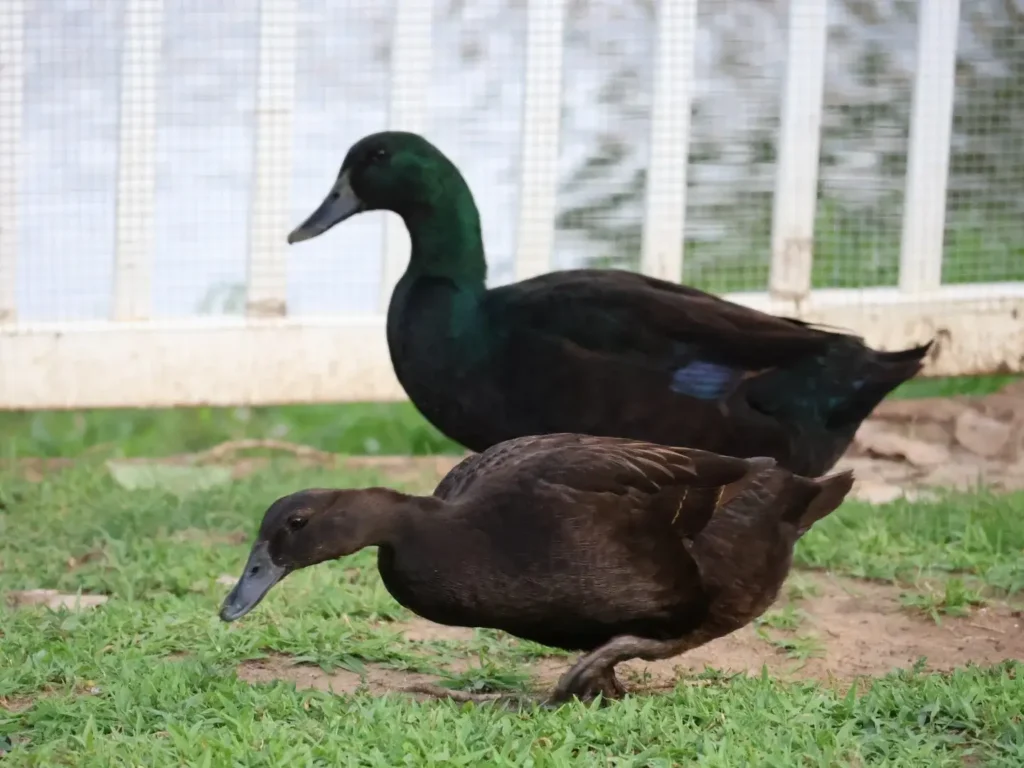Cayuga Duck

Scientific Name
Anas platyrhynchos domesticus
Alternative Names
Cayuga Duck
Measurements
| Feature | Male | Female |
|---|---|---|
| Weight | 3.6 kg (8 lb) | 3.2 kg (7 lb) |
| Length | 50–65 cm (20–26 in) | 50–65 cm (20–26 in) |
| Wingspan | 80–95 cm (31–37 in) | 80–95 cm (31–37 in) |
Status
The Cayuga is an American domestic duck that originated in New York’s Finger Lakes region around the 1840s. It was once the leading duck raised for meat across the United States before the American Pekin took its place. Today, it’s more often kept for its beauty, calm nature, and glossy black feathers. The breed’s conservation status in the U.S. is currently listed as Watch by The Livestock Conservancy, meaning numbers are limited but stable.
Identification
The Cayuga stands out with its deep black plumage that shines with a green, metallic glow in sunlight—like polished beetle shells. Its beak, legs, and feet are black, blending beautifully with its feathers. The eyes are dark brown, and older ducks sometimes show white feathers as they age. Males and females look similar, though drakes are slightly larger and have the curled tail feather typical of Mallard-derived breeds.
Voice
A gentle and quiet duck compared to other breeds. Females make the familiar quacking sound, while males are softer and raspier.
Diet
Like most domestic ducks, Cayugas eat a variety of foods—grains, aquatic plants, insects, and small invertebrates. They are good foragers and often search for food in grassy or muddy areas.
Distribution
Originally bred in New York, Cayugas can now be found across North America and in several other countries, especially among hobby farmers and breeders who appreciate their elegant looks and calm behavior.
Habitat
Prefers calm waters such as ponds, small lakes, and garden settings. They adapt easily to farms or backyards where they can roam freely and bathe.
Breeding
Cayugas are steady layers, producing 100–150 large eggs each year. Early in the season, their eggs are a striking dark gray to black, gradually fading to pale blue or white as the months pass. Incubation lasts about 28 days. Ducklings hatch with soft black down and often show a hint of green sheen as they grow.
Use
Once prized for its rich, flavorful meat, the Cayuga is now more often kept as an ornamental breed or for exhibition. Its glossy plumage and calm personality make it a favorite among duck enthusiasts and small-scale keepers.
Conservation
Although not globally endangered, the Cayuga’s population is relatively small. Efforts are ongoing to maintain and increase breeding stock through conservation programs and heritage farming.
